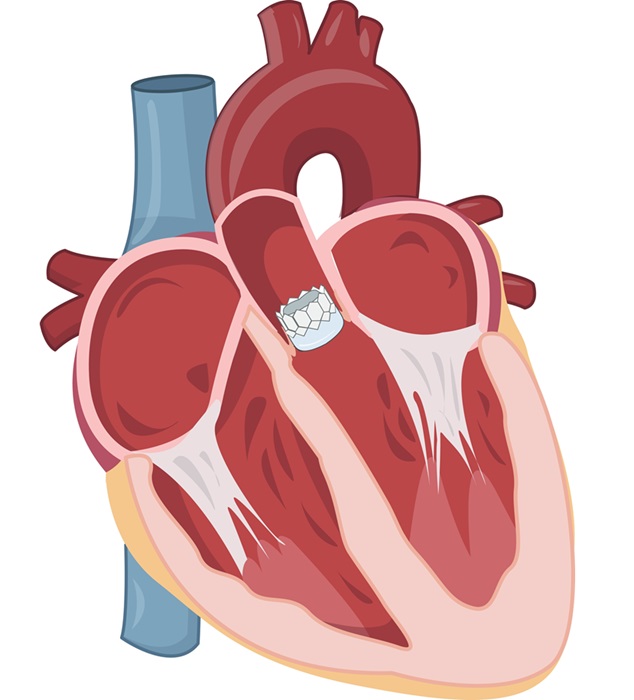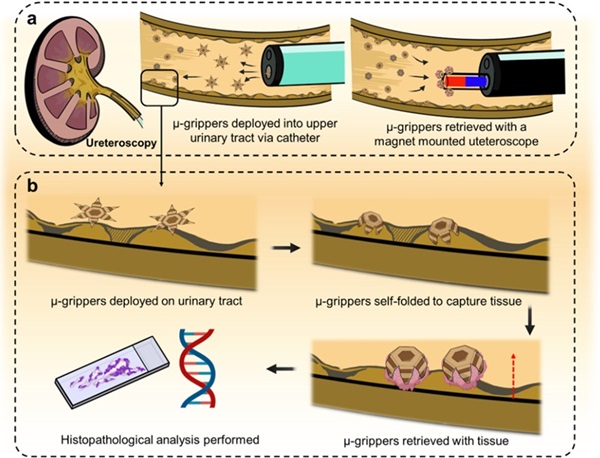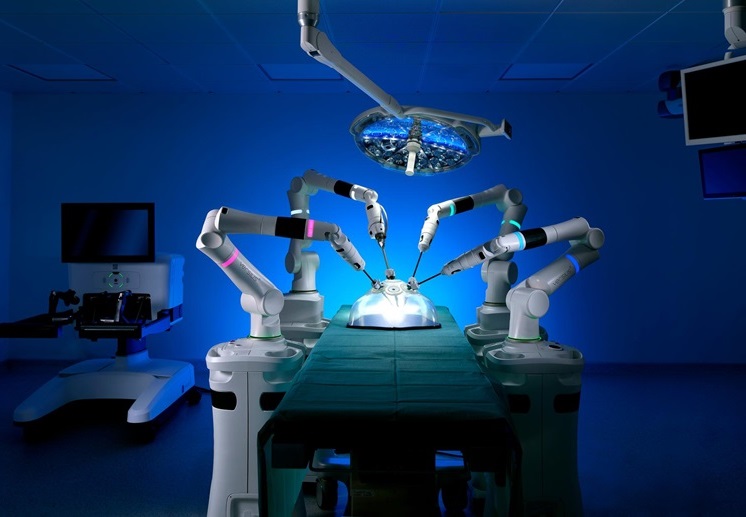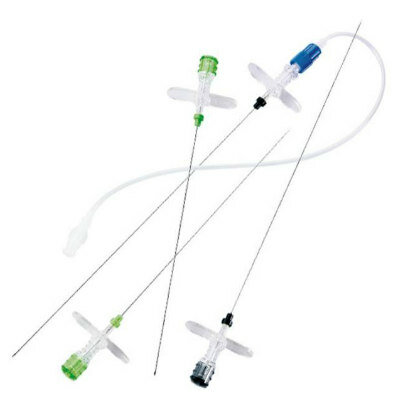Neurological Disorders Drive Portable CT Market through 2021
|
By HospiMedica International staff writers Posted on 28 Mar 2017 |
The global portable computerized tomography (CT) scanners market is expected to grow at a CAGR of close to 8% during the period 2017-2021, driven primarily by the rise in incidences of neurological disorders and trauma cases. These are the latest findings of Technavio Research, a global technology research and advisory company.
The global portable CT scanners market is categorized into three major application segments: Neurology, Cardiology, and Orthopedic Disorders. In 2016, the neurology segment dominated the CT scanners market and accounted for a major portion of the overall market share. The rise in the prevalence of degenerative dementia and other conditions associated with Alzheimer’s disease in the older adult population is driving the usage of portable CT scanners for the diagnosis of neurological disorders. Portable CT scanners are also in high demand for diagnosing head and brain injuries due to the rise in accidents, given their ability to minimize the movement of critically ill patients, and consequently reduce transportation-related morbidity. The ability of portable CT scanners to make it easier to perform medical imaging of patients during emergencies and reduce patient death during departmental transfer for scanning and assessment is expected to be a key driver of the growth in the global portable CT scanners market.
Portable CT scanners are also being used for the early diagnosis of cardiovascular disease (CVD) and reduce the need for invasive surgical procedures. For the diagnosis of orthopedic disorders, portable CT scanners are used for intra-operative and post-operative procedures to detect bone abnormalities, or positioning of spinal implants during/after spinal fusion procedures.
In 2016, the Americas held the highest share in the global portable CT scanners market and will maintain its dominant position for the next few years. Technical advances, such as the development of multi-slice scanners, and early diagnosis and deterrence of severe medical conditions, will aid the growth of the global portable CT scanners market. Additionally, frequent changes in hospital infrastructure and healthcare policies, and the use of cloud computing in the healthcare sector will further propel the growth of the global market for portable CT scanners.
Currently, the global portable CT scanners market is highly consolidated due to the presence of few market players, although the presence of software providers will lead to the competition intensifying over the next four years.
The global portable CT scanners market is categorized into three major application segments: Neurology, Cardiology, and Orthopedic Disorders. In 2016, the neurology segment dominated the CT scanners market and accounted for a major portion of the overall market share. The rise in the prevalence of degenerative dementia and other conditions associated with Alzheimer’s disease in the older adult population is driving the usage of portable CT scanners for the diagnosis of neurological disorders. Portable CT scanners are also in high demand for diagnosing head and brain injuries due to the rise in accidents, given their ability to minimize the movement of critically ill patients, and consequently reduce transportation-related morbidity. The ability of portable CT scanners to make it easier to perform medical imaging of patients during emergencies and reduce patient death during departmental transfer for scanning and assessment is expected to be a key driver of the growth in the global portable CT scanners market.
Portable CT scanners are also being used for the early diagnosis of cardiovascular disease (CVD) and reduce the need for invasive surgical procedures. For the diagnosis of orthopedic disorders, portable CT scanners are used for intra-operative and post-operative procedures to detect bone abnormalities, or positioning of spinal implants during/after spinal fusion procedures.
In 2016, the Americas held the highest share in the global portable CT scanners market and will maintain its dominant position for the next few years. Technical advances, such as the development of multi-slice scanners, and early diagnosis and deterrence of severe medical conditions, will aid the growth of the global portable CT scanners market. Additionally, frequent changes in hospital infrastructure and healthcare policies, and the use of cloud computing in the healthcare sector will further propel the growth of the global market for portable CT scanners.
Currently, the global portable CT scanners market is highly consolidated due to the presence of few market players, although the presence of software providers will lead to the competition intensifying over the next four years.
Latest Business News
- Hologic Acquires Gynesonics to Strengthen Existing Gynecological Surgical Business
- Smith+Nephew and JointVue Partner on Ultrasound Preoperative Planning in Robotics-Assisted Surgery
- Stryker Completes Acquisition of NICO Corporation
- BD Completes Acquisition of Critical Care from Edwards Lifesciences
- ZOLL to Acquire Vyaire Medical’s Ventilator Business
- Getinge Acquires Organ Transport Products and Services Company Paragonix Technologies
- Stryker Acquires care.ai to Boost AI-Driven Healthcare
- Johnson & Johnson Acquires Cardiovascular Specialist V-Wave
- Abbott and Medtronic Global Partnership to Integrate Advanced Glucose Sensing Technology with Automated Insulin Delivery Systems
- Edwards Lifesciences Acquires Sheba Medical’s Innovalve Bio Medical
- International Hospital Federation Awards 2024 Finalists Announced
- 2024 World Medical Tourism Conference and Medical Tourism Expo to Showcase Latest Innovations
- BD Acquires Edwards Lifesciences' Critical Care Product Group for USD 4.2 Billion
- MEDICA INNOVATION FORUM for the Healthcare Innovations of the Future
- Johnson & Johnson Acquires Cardiovascular Medical Device Company Shockwave Medical
- Mindray to Acquire Chinese Medical Device Company APT Medical
Channels
Critical Care
view channel_1.jpg)
Cutting-Edge Bioelectronic Device Offers Drug-Free Approach to Managing Bacterial Infections
Antibiotic-resistant infections pose an increasing threat to patient safety and healthcare systems worldwide. Recent estimates indicate that drug-resistant infections may rise by 70% by 2050, highlighting... Read more
Sophisticated Machine-Learning Approach Uses Patient EHRs to Predict Pneumonia Outcomes
Pneumonia, an infection that results in difficulty breathing due to fluid accumulation in the lungs, is one of the leading causes of death worldwide. This condition is particularly challenging to treat... Read more
Early TAVR Benefits Patients with Asymptomatic Severe Aortic Stenosis
For patients with asymptomatic severe aortic stenosis (AS) and preserved left-ventricular ejection fraction, current guidelines recommend clinical surveillance every six to twelve months.... Read more
First-Of-Its-Kind Experimental Therapy Enhances Tissue Repair After Heart Attack
Cardiovascular disease remains the leading cause of death worldwide, accounting for one-third of all annual fatalities. Following a heart attack, the heart's natural regenerative ability is limited, resulting... Read moreSurgical Techniques
view channel
Microgrippers For Miniature Biopsies to Create New Cancer Diagnostic Screening Paradigm
The standard diagnosis of upper urinary tract cancers typically involves the removal of suspicious tissue using forceps, a procedure that is technically challenging and samples only a single region of the organ.... Read moreMiniature Soft Lithium-Ion Battery Could Be Used as Defibrillator During Surgery
The development of tiny smart devices, measuring just a few cubic millimeters, requires equally miniature power sources. For minimally invasive biomedical devices that interact with biological tissues,... Read more.jpg)
TAVI Procedure Supported by Radial Artery Access Reduces Bleeding Complications
The TAVI procedure, or Transcatheter Aortic Valve Implantation, is a minimally invasive technique in which a new aortic valve is inserted through a femoral artery to replace a narrowed old valve.... Read more
Portable Surgical Robot Seamlessly Integrates into Any OR for Performing Cholecystectomy Procedures
The United States represents a significant market with a strong demand for a flexible surgical robotic system applicable across various care settings. However, there has been a lack of sufficient options... Read morePatient Care
view channel
Portable Biosensor Platform to Reduce Hospital-Acquired Infections
Approximately 4 million patients in the European Union acquire healthcare-associated infections (HAIs) or nosocomial infections each year, with around 37,000 deaths directly resulting from these infections,... Read moreFirst-Of-Its-Kind Portable Germicidal Light Technology Disinfects High-Touch Clinical Surfaces in Seconds
Reducing healthcare-acquired infections (HAIs) remains a pressing issue within global healthcare systems. In the United States alone, 1.7 million patients contract HAIs annually, leading to approximately... Read more
Surgical Capacity Optimization Solution Helps Hospitals Boost OR Utilization
An innovative solution has the capability to transform surgical capacity utilization by targeting the root cause of surgical block time inefficiencies. Fujitsu Limited’s (Tokyo, Japan) Surgical Capacity... Read more
Game-Changing Innovation in Surgical Instrument Sterilization Significantly Improves OR Throughput
A groundbreaking innovation enables hospitals to significantly improve instrument processing time and throughput in operating rooms (ORs) and sterile processing departments. Turbett Surgical, Inc.... Read moreHealth IT
view channel
Machine Learning Model Improves Mortality Risk Prediction for Cardiac Surgery Patients
Machine learning algorithms have been deployed to create predictive models in various medical fields, with some demonstrating improved outcomes compared to their standard-of-care counterparts.... Read more
Strategic Collaboration to Develop and Integrate Generative AI into Healthcare
Top industry experts have underscored the immediate requirement for healthcare systems and hospitals to respond to severe cost and margin pressures. Close to half of U.S. hospitals ended 2022 in the red... Read more
AI-Enabled Operating Rooms Solution Helps Hospitals Maximize Utilization and Unlock Capacity
For healthcare organizations, optimizing operating room (OR) utilization during prime time hours is a complex challenge. Surgeons and clinics face difficulties in finding available slots for booking cases,... Read more
AI Predicts Pancreatic Cancer Three Years before Diagnosis from Patients’ Medical Records
Screening for common cancers like breast, cervix, and prostate cancer relies on relatively simple and highly effective techniques, such as mammograms, Pap smears, and blood tests. These methods have revolutionized... Read morePoint of Care
view channel
Handheld, Sound-Based Diagnostic System Delivers Bedside Blood Test Results in An Hour
Patients who go to a doctor for a blood test often have to contend with a needle and syringe, followed by a long wait—sometimes hours or even days—for lab results. Scientists have been working hard to... Read more













